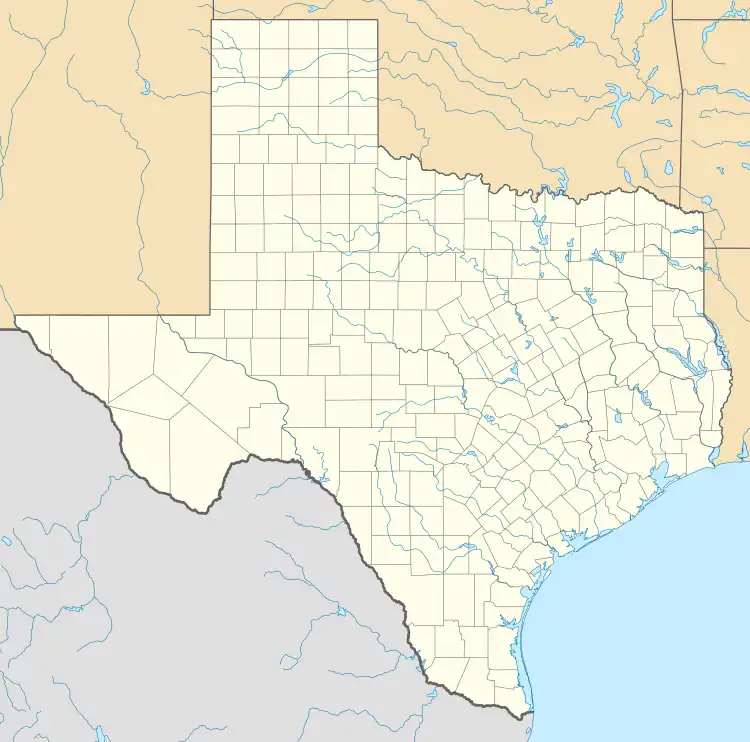 Maxwell Location of Maxwell in Texas  Maxwell Maxwell (the United States) | |
| Accident | |
|---|---|
| Date | July 30, 2016 |
| Summary | Collision with power lines due to pilot error |
| Site | Maxwell, Texas, United States 29°53′6″N 97°45′44″W / 29.88500°N 97.76222°W |
| Aircraft | |
| Aircraft type | Kubicek BB85Z hot air balloon |
| Operator | Heart of Texas Balloon Ride company |
| Registration | N2469L |
| Flight origin | Fentress Airpark, Texas |
| Destination | Unplanned |
| Occupants | 16 |
| Passengers | 15 |
| Crew | 1 |
| Fatalities | 16 |
| Survivors | 0 |
On July 30, 2016, sixteen people were killed when the hot air balloon they were riding in struck power lines, crashed and caught fire in the unincorporated community of Maxwell, near Lockhart, Texas, 30 miles (50 km) south of the state capital Austin. It is the deadliest ballooning disaster to ever occur in the United States.[1]
Aircraft
The aircraft involved was a Kubicek BB85Z hot air balloon,[2] registration N2469L.[3] The balloon was operated by the Heart of Texas Balloon Ride company, which served people in the Greater Austin area.[4]
Accident
The balloon departed from Fentress Airpark at 06:58 local time (11:58 UTC) on Saturday, July 30, 2016.[2][5] It was carrying the pilot and fifteen passengers.[6] At 07:42,[2] the aircraft struck power lines and crashed into a field near Lockhart, Texas.[7][8][9][5] All sixteen people on board were killed. The emergency services were alerted at 07:44 about a "possible vehicle accident", and arrived at the scene to find the basket of the balloon on fire.[10][11]
A witness described hearing two "pops" which were thought to be a gun going off. Reports said that the balloon lost contact about half an hour into the scheduled one-hour flight.[4] The envelope of the balloon landed about 3⁄4 mile (1,320 yd; 1,210 m) northeast of the burned-out gondola. The flight had covered a distance of about 8 nautical miles (15 km).[2]
Investigation
The Federal Aviation Administration and the National Transportation Safety Board (NTSB) led the investigation into what was designated a "major accident" by the NTSB.[12][4] The Federal Bureau of Investigation (FBI) also secured evidence for the NTSB's investigation.[9] Fourteen personal electronic devices (cellphones, an iPad, and cameras) were recovered from the wreckage. These were turned over to the FBI for the recovery of evidence.[2] The NTSB held an investigative hearing into the accident in December 2016.[13][14]
In October 2017, the NTSB determined the accident was caused by the pilot's "pattern of poor decision-making" that led him to launch the balloon (on a day when other balloon operators cancelled their planned flights because of low cloud and fog), to continue the flight into fog and above clouds, and then to descend near clouds which made it difficult to see and avoid obstacles. The pilot's medical conditions (depression and ADHD), the prescription drugs he was taking, and the fact that balloon pilots do not need a medical certificate even for commercial flights were contributing factors leading to the accident.[5]
Aftermath
On August 1, Heart of Texas Hot Air Balloon Rides, whose owner died in the accident, announced that it would be suspending operations.[15][16] More than two years later on September 27, 2018, the House of Representatives approved new legislation that would mandate medical exams for commercial balloon pilots.[17]
See also
- List of ballooning accidents
- 2012 Carterton hot air balloon crash -- a very similar accident where poor pilot decision-making resulted in balloon colliding with power lines
References
- ↑ "16 feared dead after hot air balloon crash in central Texas". BNO News. July 30, 2016. Retrieved November 23, 2021.
- 1 2 3 4 5 Tolbert, Patrick; Bien, Cathy (July 31, 2016). "NTSB: Hot air balloon made contact with a utility wire". KXAN. LIN Television of Texas. Archived from the original on August 3, 2016. Retrieved August 1, 2016.
- ↑ "ASN Wikibase Occurrence #188936". Aviation Safety Network. July 30, 2016. Retrieved August 1, 2016.
- 1 2 3 "Texas hot air balloon crash: 'No survivors' among 16 on board". BBC News Online. July 30, 2016. Retrieved July 30, 2016.
- 1 2 3 NTSB Board Meeting, October 17, 2017 Press Release Abstract Webcast Archived October 18, 2017, at the Wayback Machine
- ↑ Flynn, Liz; Patterson, Thom; Gray, Melissa (July 31, 2016). "Texas hot air balloon hit power lines before crash, NTSB says". CNN. Retrieved August 1, 2016.
- ↑ NTSB preliminary report
- ↑ Bliss, Kathi (July 30, 2016). "16 believed killed in balloon incident". Lockhart Post-Register. Retrieved July 30, 2016.
- 1 2 Visser, Stephen; Newsome, John (July 30, 2016). "Hot air balloon with 16 aboard crashes in Texas; no survivors". CNN. Retrieved July 30, 2016.
- ↑ "Hot Air Balloon Crash Kills 16 People In Texas". Sky News. July 30, 2016. Retrieved July 30, 2016.
- ↑ "Caldwell County Office of Emergency Management". Facebook. July 30, 2016. Retrieved July 30, 2016.
- ↑ Vertuno, Jim (July 30, 2016). "'Number of Fatalities' in Texas Balloon Crash; Toll Unclear". ABC News. Retrieved July 30, 2016.
- ↑ "NTSB Accident ID DCA16MA204". NTSB. December 9, 2016. Retrieved September 8, 2017.
- ↑ "Lockhart Balloon Crash Board Meeting Scheduled". NTSB. July 17, 2017. Retrieved September 8, 2017.
- ↑ Sandoval, Polo; Gray, Melissa; Yan, Holly (August 1, 2016). "Hot air balloon crash: Company suspends operations". CNN. Retrieved August 1, 2016.
- ↑ "Hot Hot Air Balloon Rides". Heart of Texas Hot Air Balloon Rides. August 1, 2016. Retrieved August 2, 2016.
- ↑ "After deadly balloon crash in Texas, lawmakers mandate health screenings for pilots". ExpressNews.com. September 26, 2018. Retrieved September 28, 2018.